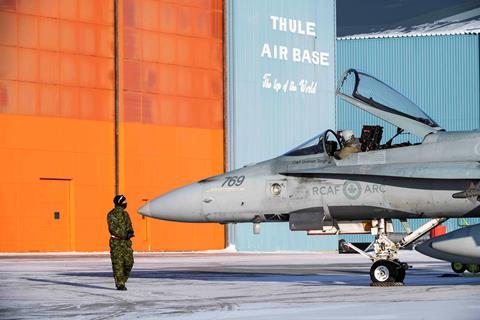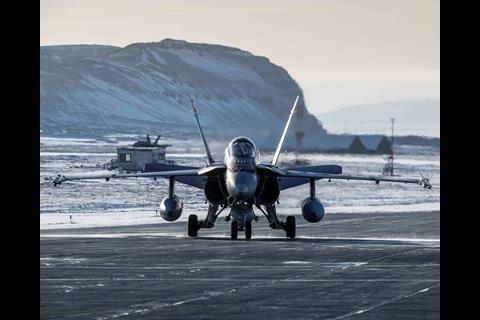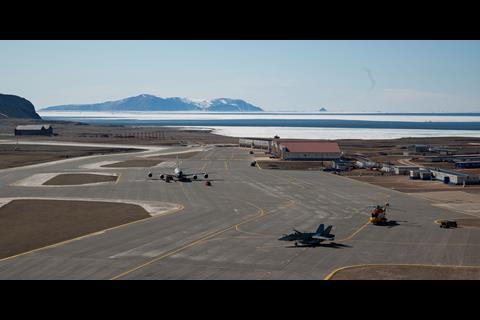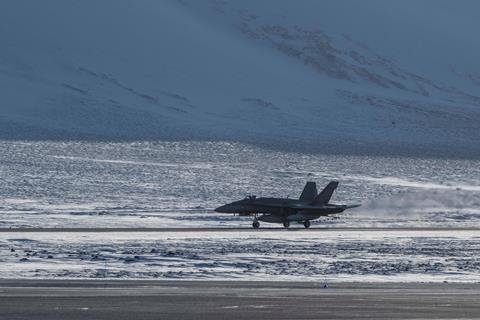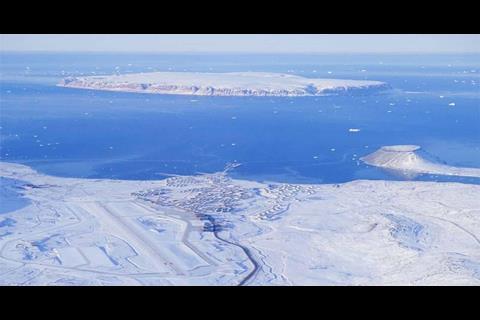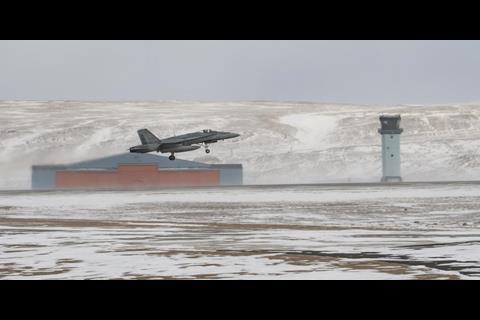The US Air Force (USAF) will spend nearly $4 billion over the next 12 years to improve facilities and maintain operations at Thule air base in Greenland.
The Department of Defense (DoD) on 16 December said it had awarded a contract valued at $3.95 billion to Greenlandic firm Inuksuk A/S to operate and maintain the far northern outpost through 2034.
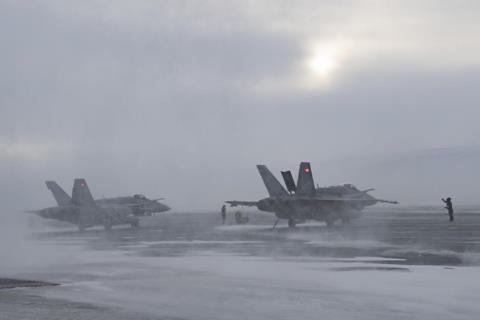
The deal covers services including civil engineering, airfield operations, fuels management, transportation and non-secure communications, as well as services for base personnel.
The contract with Inuksuk includes the operation of an on-site seaport, which is the primary means of delivering critical supplies to Thule, including spare parts, construction materials and food. That port is closed by ice in the winter, during which time the USAF says the base can only be accessed “by air or dog sled”.
Located at 76 degrees north latitude, Thule (pronounced too-lee) lies 750 miles (1,210km) above the Arctic Circle on Greenland’s west coast. The facility, which was first operated by the USAF and now the US Space Force (USSF) under an agreement with Denmark, is the Pentagon’s northernmost military outpost.
Thule was officially created in 1951, according to the US Government Accountability Office, to “provide early warning and attack assessment of ballistic missile launches, provide space surveillance data and to provide tracking, telemetry and commanding… of earth orbiting satellite vehicles.”
During the Cold War, numerous aircraft operated from Thule, including the Northrop F-89 Scorpion jet interceptor and the Convair B-36, Boeing B-47 and B-52 strategic bombers.
In 1968, a nuclear-armed USAF B-52 crashed near Thule, spreading radioactive plutonium into the local environment.
Today, the base fills many of the same roles as in the previous century. It hosts a ballistic missile early warning system, satellite control and tracking facilities and now a full air base, capable of supporting modern fighter jets, transport aircraft and aerial refuelling tankers.
The US embassy in Copenhagen says that the airfield boasts a 3,048m (10,000ft) runway and more than 3,000 US and international flights per year.
In addition to being the US military’s northernmost station, Thule has another claim to fame.
“Thule air base is the only air force base with a white runway,” the USAF says. “This is to prevent it from warming in the summer sun and melting the ground below.”
The USSF, which assumed operational control of the base after that service’s creation in 2019, notes the airfield is open throughout the year.
Although the airfield can receive cargo deliveries throughout the year, frequent high winds, limited visibility and runway ice build-up precluded smaller and faster fighter aircraft from operating from Thule in winter months.
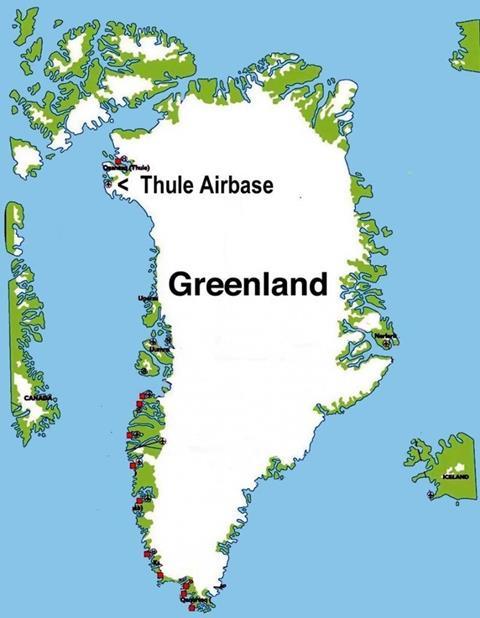
That changed in February 2021, when USAF engineers installed a mobile arresting wire system at Thule. Known as the Mobile Aircraft Arresting System (MAAS), the platform functions similarly to the arresting wires used to recover aircraft landing on naval aircraft carriers.
At Thule, MAAS is allowing Royal Canadian Air Force (RCAF) Boeing CF-18s to land in as little as 300m, while also reducing risk during periods of high winds and low visibility. RCAF fighters have operated from the base during subsequent exercises in 2021 and 2022, in both summer and winter.
The CF-18, Canada’s designation for the F/A-18 Hornet, was originally designed as a naval fighter and is engineered to land on an aircraft carrier using an arresting wire.
The capability, combined with MAAS, means that Thule now has the ability to host year-round fighter operations for the first time since the 1950s. Ottawa plans to acquire 88 Lockheed Martin F-35A fighters, which are not rated for a carrier landing, to replace its CF-18 fleet.
The land-based MAAS is anchored to the ground using concrete pads, which were installed at Thule in 2020.
The joint USA-Canada North American Aerospace Defense Command (NORAD) said “small investments deliver big capabilities”, in reference to the impact from the modest infrastructure project that enabled MAAS to be installed in such harsh conditions.
With both Washington and Ottawa investing billions of dollars into NORAD and Arctic defence more broadly, the Greenland facility is likely to be the target for additional spending in the future.
See photos from operations at Thule air base:






















